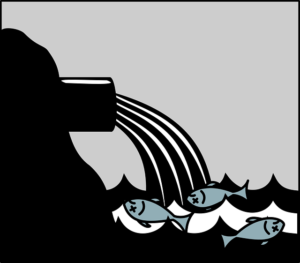Researching Plastics in Sea Salt
During our research into Himalayan salt, we discovered there can be plastics in sea salt
 Toxic plastics in sea salt is a worldwide problem that harms all things natural including the human body.
Toxic plastics in sea salt is a worldwide problem that harms all things natural including the human body.
BPA is known for harming the brain, and most people buy cheap plastic materials that have BPA in them. Sometimes the plastic is soft, other times it’s not.
Most companies do NOT care about the toxics they are feeding humans, therefor they also don’t care about dumping their plastic waste into the ocean.
The global production of plastics in 2015 exceeded 322 million tons.
Large pieces of plastic start fragmenting into smaller pieces the size of 1 and 1000 μm. These are called microplastics (MPs) and they are very toxic.
They show up in the water due to synthetic sandblasting, cosmetics, and textiles.
It’s well documented that it’s showing up in the Celtic seas, Luarentian Great Lakes, the Persian Gulf, and in sub-tropical gyres. Gyres are large systems of circulating ocean currents.
These MPs show up in seafood such as clams, muscles and fish, and this isn’t just a problem in the North American region, but also in Europe.
Another HUGE concern is plastics in sea salt.
Very little is documented about whether these MPs find their way into the high end sea salt we purchase.
Sea salt is crystallized through evaporation of the seawater. Of course it’s only logical that if it comes from the sea and the sea has toxic MPs in it, that it would transfer over to the sea salt.
The only study on the subject showed up to 681 MPs/kg in salts originating in China.
The study wasn’t done to the fullest extent, so they were unable to determine the chemical composition of the MPs.
In another study they investigated and visually saw MPs in 17 different brands of sea salt from 8 different countries over 4 continents.
“The MPs per salt sample ranged from 0 per kg in the salt sample # France-F (i.e. Country of origin: France, brand F) to 10 in the salt sample # Portugal.”
They found “Polypropylene (PP) and polyethylene (PE) were the most abundant plastic polymers in the salt samples (40.0% and 33.3%, respectively).”
“Almost one fourth of the isolated particles were identified as pigments (phthalocyanine, chromate yellow, and hostaperm blue) ”
“Phthalocyanine is a synthetic pigment and is extensively used in the plastics industry and was the main pigment isolated from the salt samples (Fig. 2c). Hostaperm blue falls under the copper phthalocyanine chemical class and is an industrial dye that is mainly used in the plastics industry. Victoria blue is commonly used as a coloring agent in polyacrylic fibers (Supplementary Information Figure 1a) 30 that are mainly introduced to the marine environment through the washing of clothes after passing through sewage treatment plants. Meanwhile, lead chromate (yellow) pigment is a toxic compound that has extensive applications in paints and plastic industries owing to its excellent light-fastness and low cost. Earlier studies have attributed exposure to lead chromate pigment with incidents of bronchial carcinoma, cerebrovascular disease, and nephritis in humans. However, the occurrence of only one particle of lead chromate pigment per Kg of salt # South Africa-Q, poses a negligible threat to the health of consumers.”
They ruled out that these were paint particles.
These pigments are also used in textiles, rubber and fiberglass, so you can see that these industries just dump their toxins into the water with no repercussions and no care for human or all living life’s safety.
Assuming humans are just getting their sodium intake through sea salt, they could be ingesting a maximum of 37 plastic particles per year. Less if they don’t consume as much sea salt.
Saying that, overall due to their small particle size and not showing up in huge amounts, you are more likely to get MPs through water and food.
Unfortunately since they didn’t have the proper equipment, they weren’t able to test smaller particles less than 149 μm.
They did find a larger number of smaller particles which will affect other organs, and in another study, they found very small particles of 20 μm in the gut and gills of zebrafish, and 5 μm in their liver.
Amazingly it’s not just plastics in sea salt we have to concern ourselves with, they found MPs in the study of honey and beer.
And because plastics take a very long time to degrade and they are of low density, they are found to travel and contaminate items across the world hundreds of thousands of miles away.
If companies don’t start using non toxic plastic materials and dispose of them safely, they will continue to pollute our waters worldwide and contaminate our sea products.
Click here to see the full study and data.






